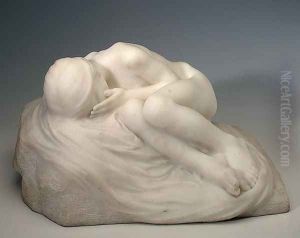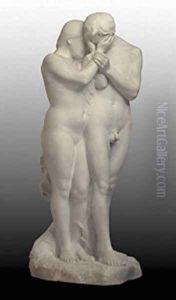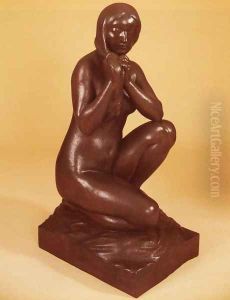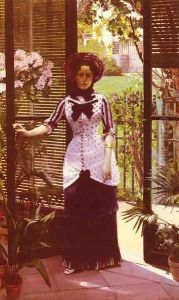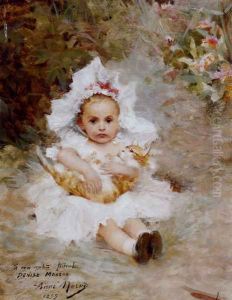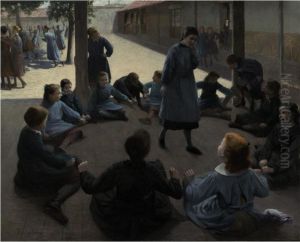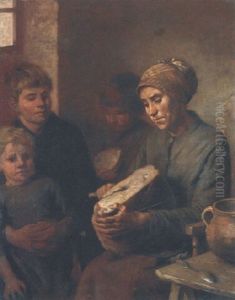Albert Bartholome Paintings
Albert Bartholomé was a French painter and sculptor, born on August 29, 1848, in Thiverval-Grignon, near Paris, France. Initially embarking on a career in business, Bartholomé's life took a decisive turn following the death of his wife in the early 1880s. This personal tragedy deeply affected him and prompted his shift towards art, initially as a means of coping with his loss.
Although Bartholomé started his artistic journey as a painter, he is most renowned for his work in sculpture. His artistic transition was also influenced by his friendships with leading artists of his time, including Edgar Degas, who introduced him to the Parisian art scene, and the impressionists, whose innovative approaches to art left a mark on his early works.
One of Bartholomé's most significant and poignant works is the Monument aux Morts (Monument to the Dead), which he began in 1895 and completed in 1901 for the Père Lachaise Cemetery in Paris. This monumental sculpture was a tribute to his late wife and others who had passed away, encapsulating themes of grief, memory, and eternal rest. The monument earned him widespread acclaim for its emotional depth and technical mastery.
Throughout his career, Bartholomé's style evolved from painting to a more profound exploration of sculpture, focusing on human figures and emotions. His works often depicted the human condition, reflecting his personal experiences of loss and mourning. Despite his transition to sculpture, he continued to paint, although his later paintings are less known compared to his sculptural endeavors.
Bartholomé's contributions to French art were recognized in his lifetime, and he was awarded the Legion of Honor, France's highest order of merit, for his artistic achievements. He continued to create and exhibit his work until his death on October 31, 1928, in Paris. Today, Bartholomé is remembered for his emotional depth and technical skill, both as a painter and a sculptor, and his work remains an important part of French art history.
